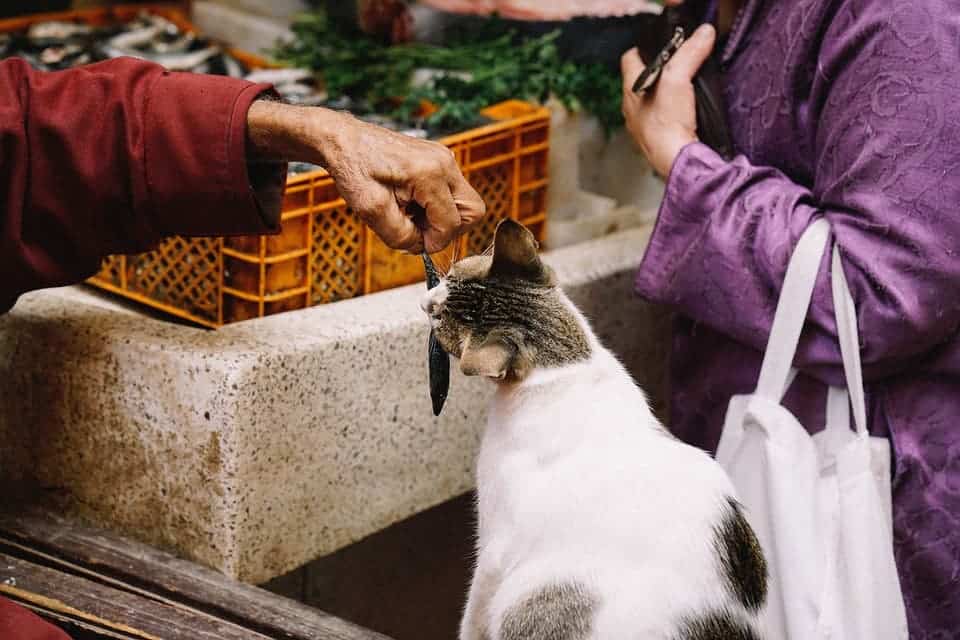The American Association of Feline Practitioners (AAFP) released a Consensus Statement yesterday, advising cat owners on how to better feed their pets.

Aren’t cats awesome? They pad into our lives on their little feet one day, and proceed to make everything better. We want to take good care of them in return, but the way we feed our cats may cause them all sorts of problems, the AAFP explains. Luckily for us, the association has also released a “how to feed” guide to help keep our pets in good health.
Pawsitively educational
“Currently, most pet cats are fed in one location ad libitum, or receive one or two large and usually quite palatable meals daily. In addition, many indoor cats have little environmental stimulation, and eating can become an activity in and of itself,” says the Consensus Statement’s chair, Tammy Sadek.
“This current type of feeding process does not address the behavioral needs of cats.”
The manner in which most people feed their cats is a poor match for the behaviors these animals have evolved with, the document explains. Cats are naturally tailored to hunt and forage for their food. They tend to eat small but frequent meals, and generally do so in a solitary fashion. It may be quite time and effort intensive to create these feeding conditions for your cat, but it does pay off — allowing cats to exhibit these feeding behaviors regularly can help alleviate or prevent stress (and obesity) related issues such as cystitis, inactivity, and overeating.
A more natural feeding program can also help anxious cats mellow out. This will have particularly beneficial effects for anxious cats that share a household with other felines — and so may not access the food frequently enough, causing weight loss.
“Appropriate feeding programs need to be customized for each household,” Sadek adds, “and should incorporate the needs of all cats for play, predation, and a location to eat and drink where they feel safe.”
The Consensus Statement is accompanied by a small brochure that offers some helpful tips on how to provide a feeding environment that keeps cats happy and well (but not over-) fed.
[panel style=”panel-info” title=”Here are some I found particularly helpful or interesting” footer=””]
- Using puzzle feeders and hiding kibbles around the home gives your cat some exercise, keeps it entertained and stimulated (both mentally and physically), and improves weight management without too much hassle on your part. Simple, easily manipulated puzzle feeders should be introduced first.
- Placing bits of food in different or new locations, including elevated areas when the cat’s physical status allows, can help offer cats forage opportunities and engage their senses in searching for food.
- A cat’s daily food allowance should be split into multiple small meals over a 24 h period.
- The caloric needs of your cat will vary over time — talk to your vet, monitor your pet’s condition, and adjust food portions accordingly. Food can be measured when filling feeding stations and again 24 h later to determine how much your cat has eaten.
- Treats shouldn’t exceed 10% of the pet’s daily caloric intake, in order to avoid dietary imbalances. Small treats work best since they’re easily consumed, your cat enjoys them, and they’re low on calories.
- Have separate watering stations throughout your home.
- Cats generally like to eat alone. They tend to view the feeding area as their safe space. In multi-cat households, separate feeding areas (it’s important that they are visually separated, i.e. out of sight of each other) can help reduce anxiety, stress, and their associated health complications.
- Feeding stations should not be close to litter boxes.
[/panel]
The Consensus Statement also highlights the importance of feeding programs, and the criteria they should take into consideration. If you want to set up a feeding program for your pet, the AAFP recommends you set a clear goal — ‘my cat needs to lose weight’, ‘I want to improve its nutrition’, etc. — and then work with a veterinary professional to design the program.
All in all, I’m definitely going to implement a few of these tips when I get back home today.
The paper “Feline Feeding Programs: Addressing behavioral needs to improve feline health and wellbeing” has been published in the Journal of Feline Medicine and Surgery.


